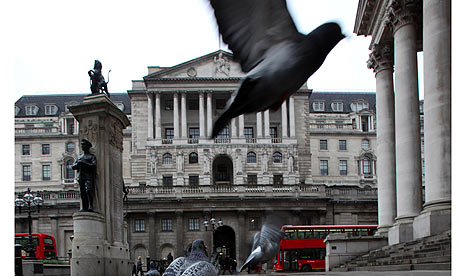Don’t we always think of London as mysterious?
Who understands it? Who grasps it? Who sees it?
Isn’t the archetypal vision of London one obscured by a fog that prevents us from seeing clearly? It’s the Victorian London of Sherlock Holmes and other period dramas where buildings are misty and human bodies are obscured by the capacious swaddlings of coats and mufflers, bustles and crinolines, cloaks – and daggers.
Yet we insistently ask the London Eye – and soon the Shard – to give us a clearer picture. For didn’t the Eye immediately become one of London’s most visited attractions? In its first 8 years, it received 30 million visitors – the equivalent of half the population of the UK. Unable to make sense of the city on the ground, we want to rise above it to see the patterns the streets make, perhaps, or to bring back and share memories – “Oh, look! We went there last week!” – so we can integrate the city into our own life stories, or to stare at the hills beyond the city and so contextualise it in the landscape. In all cases we want to make London somehow manageable. But then the wheel descends and we emerge again into the hurly-burly of the street and riverside. Again we are plunged into a chaos of sense impressions that often seem to make no sense to us.
It seems we like technology to help us understand the city. Perhaps we need it. Perhaps we cannot comprehend the city with our bodies alone; we need technological prostheses.
Perhaps only cyborgs can grasp the city.
That’s not to say we can’t understand the city through our bodies — just not the city as an entity, as a whole, as a city. Of course we can understand some human interactions in the city; we can feel the unevenness of the pavement under our feet and with our hands the stone of the cattle trough in Clerkenwell Green, the gravestones in St James’s Church, the metal railings of Smithfield; we can smell the dampness of the Thames, the traffic pollution of Piccadilly, the roses of domestic and public gardens; we can see and admire the triumph of reason and engineering in the cupolas of the Royal Naval College and St Paul’s, and observe how the imposition of classical balance and authoritative order of the Bank of England is undercut by the visual chaos around it – an impotent and frosty father whose children are out of control.

But these are only parts of the whole. We know we cannot generalise from these parts. Unlike in the ideal cities of the renaissance, or the feng-shui’d cities of China and Japan, or Roman new cities like Londinium, with their planned straight streets and systematised reasons why palaces are here, temples there and workshops elsewhere, we cannot predict what is going to come next in London. Metonymy – taking the part for the whole – may work well as a predictive tool in rationally planned cities (if we meet X, then we know Y and Z will follow) but it doesn’t work in cities like London . It’s too layered, too determined by palimpsests, too mired in history. If we meet X, K or M or L may follow — or even something outside the system altogether (e.g. のぞみ – “nozomi” – Japanese for “wish” or “hope”) .
Parts of the city cannot be taken as predictive metonyms, but as metaphors, standing for something else. The classical facade stands for controlling reason, the irregular space before it and the pigeons for unpredictability and fighting chance. The parts of London our bodies encounter need interpretation.
But who decides what that interpretation is? Can we give any meaning to any part? Who decides that “the classical facade stands for controlling reason”? What authority do they have to claim that? What methods did they use to make that interpretation? What methods can we use to determine the meaning of the parts of London we encounter? Can we really interpret the part of the city we experience with our bodies without technology, with our bodies and minds alone? Does the city tell us that our bodies are not enough, that we need other people and the props of technology to help us come to terms with it, arrive at a way to describe it, give it a terminology, understand it?
Surely this question and its implications comprise the fundamental Mystery of London.